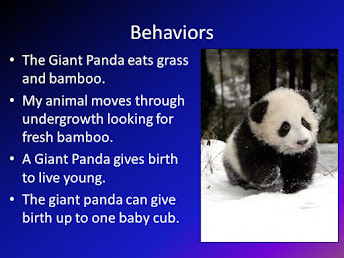Giant Panda.
Giant Pandas: Beloved Black and White Bears.
The giant panda, Ailuropoda melanoleuca, is a bear native to south central China. It is easily recognized by its distinctive black and white markings. The giant panda is an omnivore and its diet consists mainly of bamboo, but it also eats other plants, small mammals, and insects.
Giant pandas are solitary animals and spend most of their time foraging for food. They are also very good climbers and spend a lot of time in trees. Giant pandas are endangered animals and there are only about 1,864 left in the wild.
Physical Characteristics.
Giant pandas are large bears, with males weighing up to 300 pounds and females weighing up to 250 pounds. They are about 5 feet long and 3 feet tall. Giant pandas have thick fur that is black and white. The black fur covers their ears, eyes, legs, and arms. The white fur covers their face, chest, and belly.
Giant pandas have large, rounded heads and short snouts. They have strong jaws and teeth that are adapted for eating bamboo. Giant pandas also have large paws with six toes. This helps them climb trees and walk on snow.
Habitat and Distribution.
Giant pandas are found in the mountains of south central China. They live in forests that are cool and moist, with plenty of bamboo. Giant pandas are also found in captivity, in zoos around the world.
Behavior.
Diet.
Giant pandas are omnivores, but their diet consists mainly of bamboo. They eat about 50 pounds of bamboo per day. Bamboo is a low-nutrient food, so giant pandas have to eat a lot of it to get enough nutrition.
Giant pandas also eat other plants, such as fruits, berries, and grasses. They also eat small mammals, such as mice and voles, and insects.
Reproduction.
Giant pandas are sexually mature at about 4-7 years of age. The breeding season for giant pandas is from March to May. Giant pandas are pregnant for about 5 months and give birth to one or two cubs.
Giant panda cubs are born blind and helpless. They weigh about 4 ounces at birth. Giant panda mothers are very caring and protective of their cubs. They nurse their cubs for about 18 months and teach them how to find food and climb trees.
Threats to Giant Pandas.
Giant pandas are endangered animals. There are only about 1,864 left in the wild. The main threats to giant pandas are habitat loss and poaching.
Habitat loss is the biggest threat to giant pandas. As humans have cleared forests for agriculture and development, giant pandas have lost their homes. This has made it difficult for giant pandas to find food and shelter.
Poaching is also a threat to giant pandas. Giant pandas are hunted for their fur and for their bones, which are used in traditional Chinese medicine.
Conservation Efforts.
There are a number of conservation efforts underway to help save giant pandas. These efforts include:
Protecting giant panda habitat: The Chinese government has established a number of nature reserves to protect giant panda habitat.
Captive breeding programs: Giant pandas are being bred in captivity in zoos around the world. These programs are helping to increase the giant panda population.
Public education: Conservationists are working to educate the public about the importance of saving giant pandas.
Giant pandas are beloved animals around the world. They are a symbol of China and are also popular in popular culture. It is important to do everything we can to save giant pandas from extinction.






PANDAs are HAppyness!. I am very glad to know about PANDAs in your WOrds. I am very interested to REad more. Keep your writing GOING!
ReplyDeleteWow 😃panadas 🐼
ReplyDeleteExcellent writing👏🏾